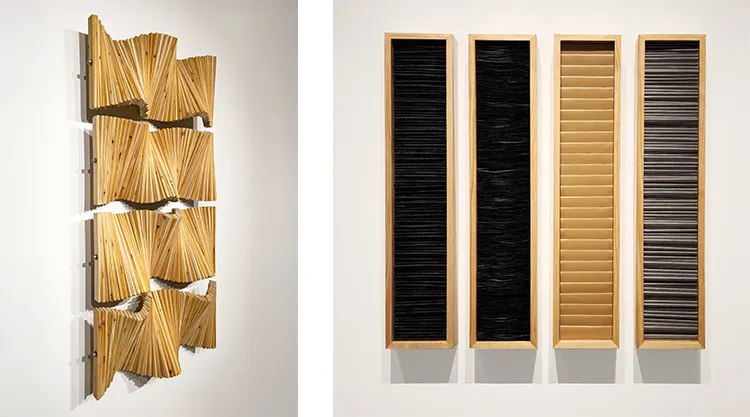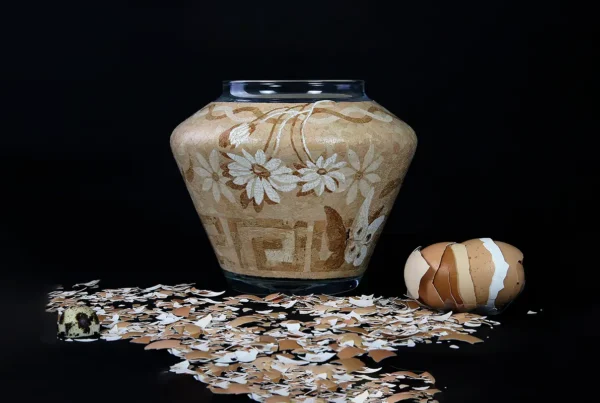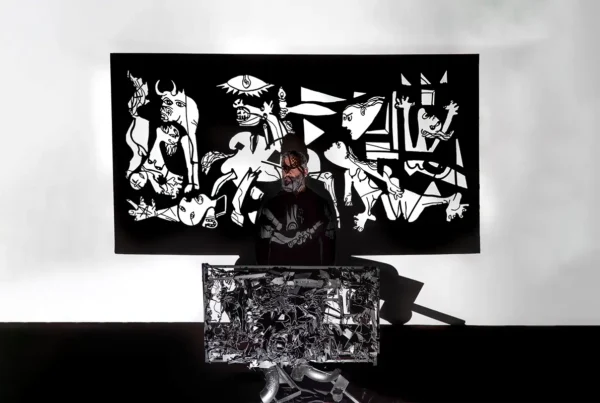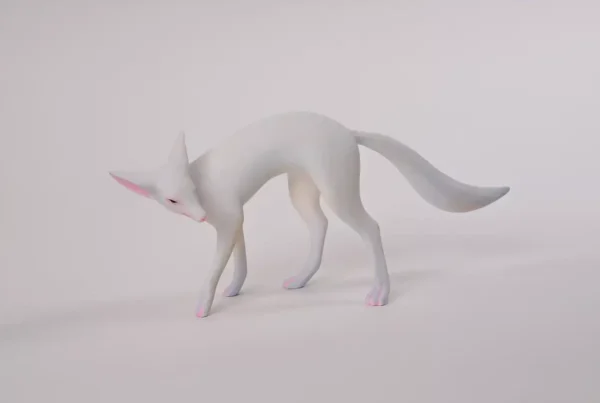“I enjoyed making my canvases more than I enjoyed painting on them.”
Mapping the Unexpected: From Soccer Fields to Studio Floors
Natalie Dunham’s creative evolution is marked by an unexpected departure from the athletic path she originally envisioned. Her early life bore the signature of dual passions: a childhood ambition to become an artist, documented in her own eight-year-old handwriting, and a commitment to sports that carried her into college on a soccer scholarship. But fate intervened in the form of a fifth ankle surgery that forced her early retirement from athletics. Instead of deterring her, this turning point nudged her toward the beginnings of an artistic transformation. An unexpected offer from her college’s Athletics Director allowed her to maintain her scholarship by working on campus, and it was through this shift—first as an office assistant and later as an art gallery aide—that she found herself immersed in the world of visual arts.
That immersion led to a dramatic pivot. Dunham abandoned her business major to pursue painting full-time, eventually earning her BFA in 2007 from Birmingham-Southern College in Alabama. But even within the painting discipline, she felt the gravitational pull of form and structure more than pigment and brush. The pivotal realization came while she was building a stretcher for a new canvas: she was more captivated by the act of constructing the frame than by what would go on it. This moment of clarity led her to spend a year assembling a sculpture portfolio, which ultimately earned her admission to the Maryland Institute College of Art, where she received her MFA in sculpture in 2010. Today, her work spans national and international boundaries, with studios located both in the United States and Europe, underscoring the broad resonance her work has found across cultures and audiences.
Her journey from aspiring athlete to accomplished sculptor is not just a story of adaptation—it’s an embodiment of her core belief that process is as meaningful as outcome. This belief is deeply embedded in her creative practice, where every project begins not with an image in mind, but with a structure waiting to be discovered. Dunham’s path reminds us that artistry can emerge from disruption, and that sometimes, the most impactful creative work begins when one is forced to let go of previous definitions of success.
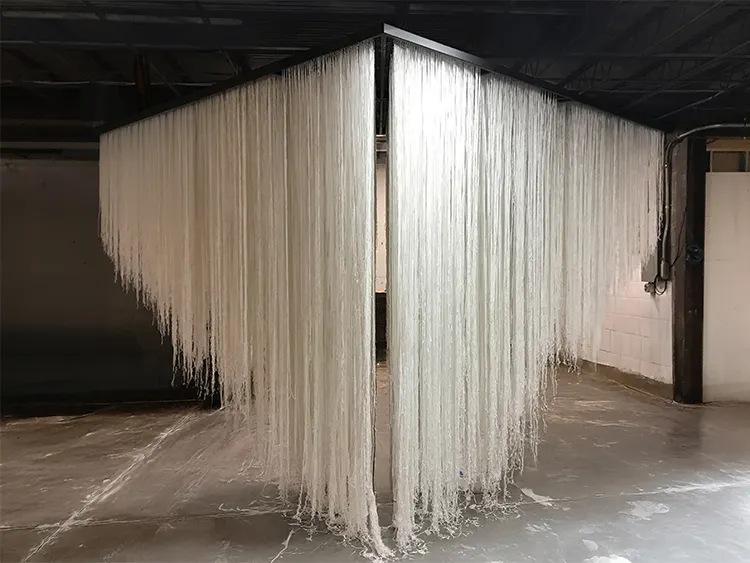
Natalie Dunham: The Architecture of Process
Dunham’s artistic approach centers on a deep engagement with structure, repetition, and systematic experimentation. Her sculptures and installations are rooted in geometric forms and linear compositions, which she assembles through accumulated materials and layered processes.
For Dunham, process is not simply the means to an end—it is the central content of the work. By highlighting the construction and assembly behind each piece, she repositions the artist as both inventor and investigator. Her work demands time and attention, challenging viewers to slow down and consider not just what they see, but how it came into being. Through repetition and the manipulation of basic forms, she creates compositions that evoke a sense of rhythm and order while maintaining an openness to variation and change. Her use of accumulation—adding, stacking, layering—mirrors the way ideas evolve, how thoughts build upon one another over time until something substantial emerges.
What distinguishes Dunham’s sculptures and installations is their simultaneous simplicity and depth. They often begin with modest materials and familiar shapes, yet the final works evoke a sense of gravity and complexity. This transformation—from the ordinary to the extraordinary—is exactly what Dunham hopes to foreground. Her practice underscores the possibility that beauty can be engineered from constraint, and that even the most unassuming elements can gain resonance through repetition, scale, and thoughtful placement. In this way, she turns the act of making into a form of storytelling—one that speaks not through characters or scenes, but through sequences, structures, and spatial dialogues.
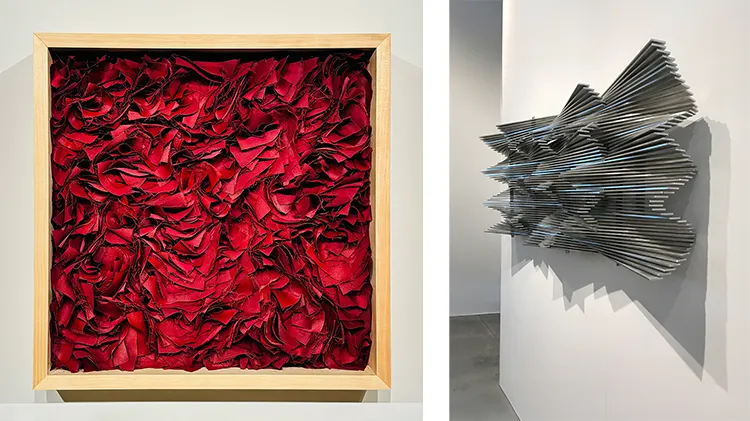
Order as Catalyst: The Precision of Process
The environment in which Dunham creates is as intentional as her art itself. Organization is not a background condition—it’s a foundational tool. Every object in her studio has a designated place, and every material is clearly labeled. This insistence on order is not about aesthetics or perfectionism; it’s about cultivating mental space for focus and clarity. A disorganized studio, in her words, is profoundly demotivating. The way she structures her surroundings mirrors the way she builds her work—methodically, purposefully, and with room for intuition to emerge only once the groundwork is solidly in place.
Her relationship with materials is exploratory, but not chaotic. While she appreciates a wide range of mediums, her heart remains with sculpture and installation. Painting was her point of entry into the art world, but her transition into sculpture marked a deeper alignment with her instinct to build, construct, and assemble. It’s telling that her senior painting exhibition already hinted at this transition, featuring mostly sculptures and drawings rather than traditional canvases. The tactile, spatial demands of sculpture better align with her desire to engage the viewer physically as well as intellectually. Her preference for working in three dimensions reflects her commitment to ideas that must be inhabited, not just observed.
This preference also extends to the types of spaces her work requires. Many of Dunham’s conceptual sketches remain unrealized—not due to lack of vision, but because they demand architectural conditions that are not always available. Tall ceilings, expansive walls, and open floor plans are essential for the kind of suspended installations she has envisioned. These suspended works, still living in sketchbooks and notes, reflect a future-oriented aspect of her practice. They represent dreams not deferred, but simply waiting for the right structures—both literal and metaphorical—to make them possible. These aspirations point to the scale and ambition that underpin her process: a constant push toward work that is immersive, elevated, and structurally bold.
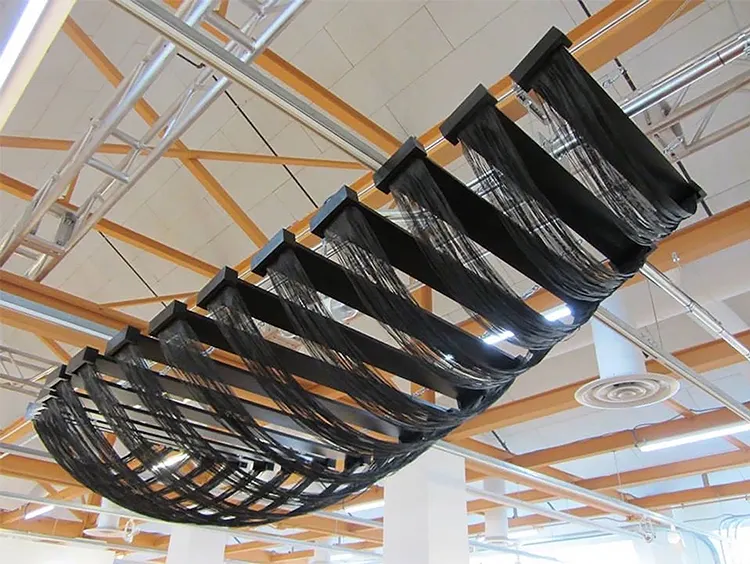
Natalie Dunham: A Chronicle in Numbers
Dunham’s numbering system is not a stylistic quirk; it’s a conceptual backbone. Each piece is given a numerical title—not arbitrarily, but as a coded chronicle of the materials used and the methods employed. These numbers function as timestamps and data points, capturing the unique combinations that bring each work to life. Acting like footnotes, they lead viewers into the underlying architecture of the work, encouraging a form of interaction that’s analytical as much as it is emotional.
By cataloging her pieces this way, Dunham resists the impulse to impose a fixed narrative or interpretive frame. Instead, the numbers serve as quiet indicators of a larger story unfolding across her body of work. They help create continuity between seemingly disparate pieces, forging an invisible thread that connects her entire oeuvre without relying on thematic repetition or visual cues.
This approach underscores Dunham’s belief that art should engage the intellect as much as the senses. Viewers are not handed a ready-made interpretation; they are encouraged to observe, infer, and question. The numerical titles invite speculation—are they chronological? Are they coded references? Are they merely placeholders? In this ambiguity lies their strength. They open rather than close the conversation around each piece, creating space for multiple readings and sustained engagement. Through this, Dunham positions the viewer not as a passive onlooker, but as an active participant in the act of meaning-making.
These quiet systems of order—numeric cataloging, structured accumulation, studio discipline—might suggest an artist devoted to control. But within this framework, Dunham leaves ample room for the unexpected. The materials she chooses, while carefully selected, often behave unpredictably when combined. The forms she creates evolve through trial, error, and adaptation. Her process is both rigid and fluid, calculated yet responsive. In every numbered piece, there exists a tension between control and surrender, structure and surprise. It is within this tension that Dunham’s work finds its most compelling voice: not in offering answers, but in raising questions—about process, about transformation, and about the ways we track meaning over time.
